Starlink vs HughesNet: 5 Aspects Compared [2025]

Do you live (or temporarily moved to) a region with little to no access to cable or fiber-based internet? You must rely on satellite internet. But if you’re confused about choosing between Starlink and HughesNet, you are in the right place.
Having used HughesNet for a few years, I was happy to hear about the arrival of Starlink in the arena. In this article, I shall compare both internet providers, list their advantages and drawbacks, and share my honest experiences across diverse parameters.
Overview
Starlink is a better choice than HughesNet, courtesy of higher speeds, lower latency, no data cap limits, and flexible policies. But it’s slightly pricey at the same time.
Starlink vs HughesNet: Quick Comparison
HughesNet vs Starlink: Detailed Comparison
Let me compare the providers across Technology used, internet plans, speeds, latency, performance, availability, and more.
1. Technology (GEO vs LEO)
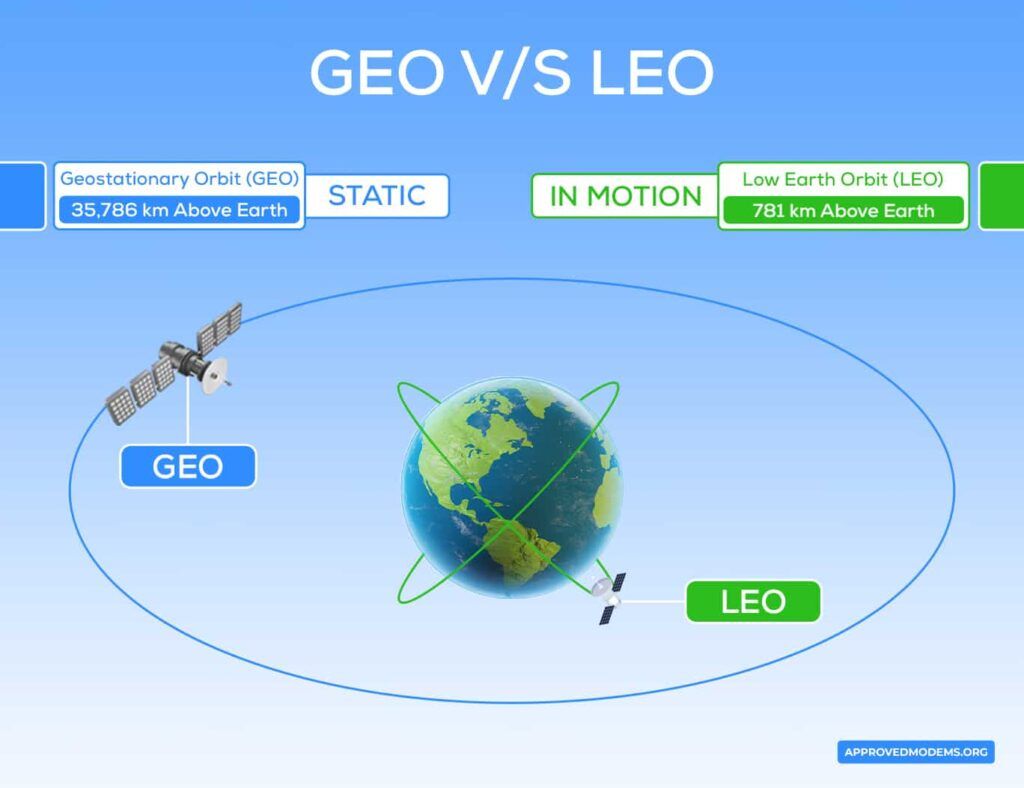
The difference between HughesNet and Starlink starts from the technology used. Hughesnet uses Geostationary satellites, while Starlink uses Low earth orbit satellites.
The signals of GEO satellites have to travel over 22000 miles, leading to higher internet latency. On the other hand, the LEO satellites are placed anywhere between 500-1500 km from the earth, reducing the latency substantially.
The low cost of LEO satellites allows the service provider to increase satellite constellation orbiting the earth, improve the bandwidth and offer high-speed internet at a lower cost.
The cost of Geo satellite is substantially higher, requiring higher capital investment, which translates to higher consumer costs.
2. Internet Plans, Speeds, and Latency
With HughesNet, internet prices and monthly plans start from $64.99 for 15GB of data. You also have options of 30GB at $74.99/Mo, 45GB at $109.99/Mo, and 75GB at $159.99.
Starlink, on the other hand, keeps it simple. It comes with one monthly plan that will cost you $110/month with no data caps or speed throttling.
HughesNet offers a download speed of 25 Mbps and an upload speed of 3 Mbps. The upload and download speeds are subject to throttling once you exceed your plan’s data cap.
Starlink offers download speeds ranging from 50 to 200 Mbps and upload speeds ranging from 20 to 50 Mbps, which might vary in the weather.
In my speed tests with Starlink, It could reach downloads at 123 Mbps and uploads at close to 20 Mbps.
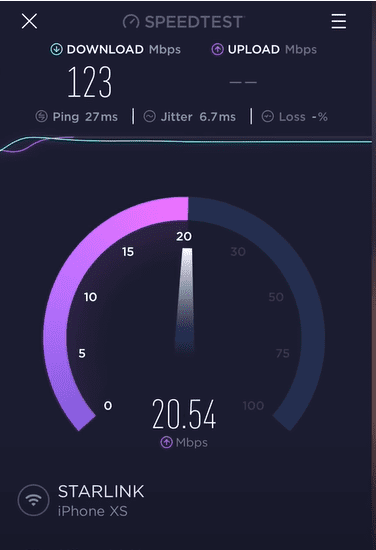
Upon performing a speed test with HughesNet, the download speed clocked close to 42 Mbps, while the upload speed only reached 1.18 Mbps, significantly lower compared to Starlink.
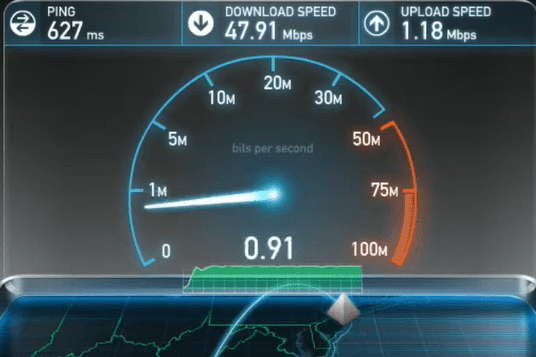
As for the latency, the low orbiting satellites of Starlink ensure a lower latency, which vastly remained less than 50ms, but with HughesNet, it remained high at anywhere between 600ms to 1000ms.
3. Performance & Reliability
While Starlink Internet had fairly consistent speeds, it was prone to interruptions and downtime because of bad weather, unlike HughesNet, which, while offering lower speeds, had more consistent speeds.
The high latency of HughesNet makes serious gaming difficult. While it can handle mobile gaming, PC or console gaming was strewn with lags, robbing me of entertainment. Starlink fared better with gaming. I could cruise through some FIFA and DOTA sessions in medium-graphics settings.
The limited bandwidth of HughesNet limits your device count to less than 15 devices. On the other hand, as mentioned in my Starlink router review, it can handle a theoretical maximum of 128; it is wise to keep the number of devices limited to 20-30.
Starlink fared well in the instances of multiple streaming sessions in high quality, while HughesNet started to buffer and stutter when the loads increased, with a few mobile devices on the tow.
During the months, Hughesnet appeared to have less downtime than Starlink, but regular buffering caused by limited speeds made Starlink more appealing. With Starlink increasing the number of satellites in orbit, we expect the downtimes to drop substantially.
4. Availability or Coverage
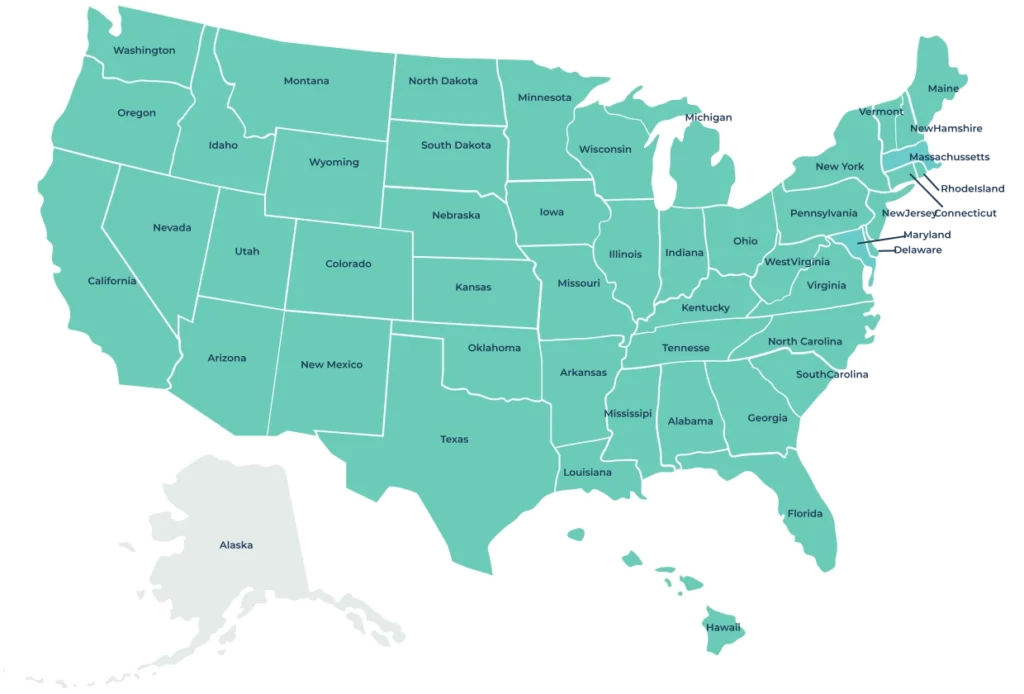
One advantage of the Hughesnet internet is its availability. It is available in all 50 states of the USA, capable of providing internet to households in rural areas.
The availability of Starlink is limited to specific regions of the USA. It covers some urban areas in 48 states, while a big chunk of waitlisted areas is yet to have access to Starlink.
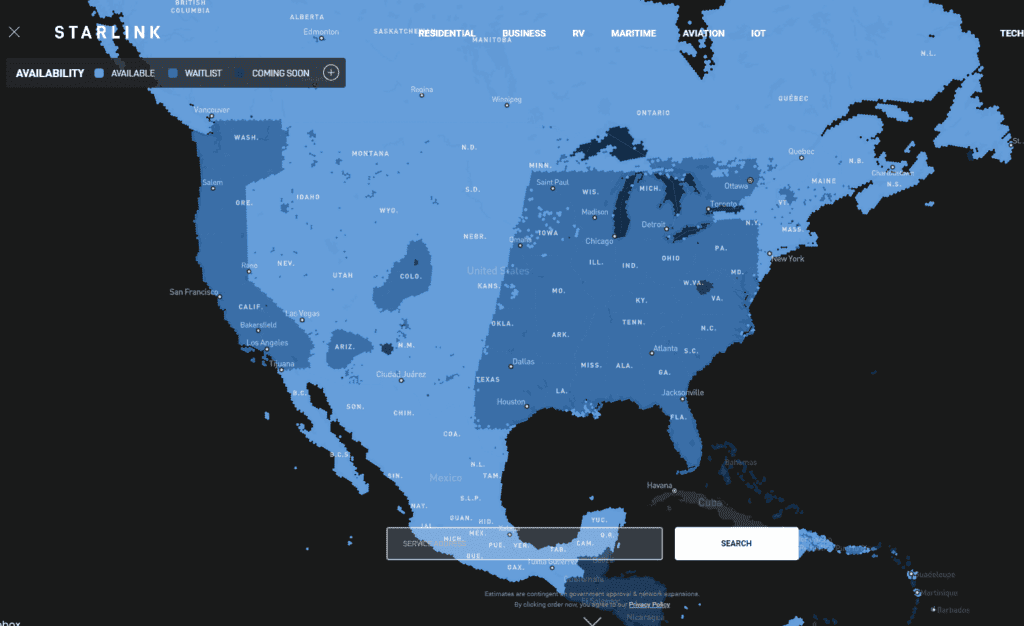
Starlink’s current availability map shows large dark blue patches that are yet to be serviced.
5. Pricing & Early Termination Policy
Upfront, Starlink seems too pricey an investment with $599 for a device, with no renting options on offer, and a sole monthly plan that will cost you $110 irrespective of usage. But if bought upfront, the HughesNet device will cost you $450 and a $100 installation fee.
With HughesNet, you can skip the installation fee if you rent the equipment, which will cost you $15 a month, over and on top of your chosen plan. With plans starting from $69.99 per month with a FUP of 30GB, you have plans up to 100GB, which will cost you $150 a month, depending on the region.
HughesNet ties you down with a 2-year contract and bills up to $400 for early termination. So, cancelling HughesNet can become a costly affair.
While Starlink has no such contract or cancellation fees, one should be wary of the initial upfront cost of equipment, which is fully refundable only for 30 days. Furthermore, you have the option to purchase an aftermarket HughesNet router, which can save you money on monthly rental fees.
If your internet usage is minimal, HughesNet seems like a good option, but the contract period seems a bummer. Despite pricey equipment and a sole subscription option, Starlink offers more value with higher speeds and a lack of any data caps.
Pros & Cons of Starlink Internet
Pros
- No data cap
- Higher download and upload speeds
- No installation fee
- Low orbit technology
- Lower Latency
- Supports gaming
Cons
- No rental options
- Pricey equipment
- Vulnerable to weather fluctuations
Pros & Cons of Hughesnet
Pros
- Flexible plans
- Rental Lease option
- Availability in 50 states
- No hard data limits
- Additional Non-peak hour data usage
Cons
- Lock-in period
- High latency
- Speed throttling
Customer Service & User Testimonials
Both Starlink and Hughesnet customer support is reachable over the phone, mobile application, and email. While there have been qualms and complaints of long waiting times, Hughesnet consistently received better ratings with customer satisfaction than its close competitor, Viasat.
Their improvements in the consistency of download speeds were a recent development that got acknowledged. Starlink is in its initial stages, and customers have found the customer service as hit or miss.
Frequently Asked Questions
Is Starlink better than Hughesnet?
In terms of speeds and latency, Starlink trumps Hughesnet. But Starlink is unavailable in most rural areas, while Hughesnet has a footprint in all 50 states, offering internet services even to remote villages.
How much does Hughes’s internet cost?
Hughesnet internet has monthly plans ranging from $69.99 to $149.99, depending on your chosen data plan. If you choose not to buy the equipment, you will incur a monthly rental of $15 to your bill.
How much does Starlink internet cost?
Since there are no monthly rental options for Starlink, the upfront cost of equipment stands at $599 and a monthly rental of $110. There is no additional installation cost.
Is HughesNet losing customers?
The contract-free option of Starlink, unlimited data with a chance at better download and upload speeds, saw HughesNet losing some customers to Starlink, wheresoever it was available. This has pushed Hughesnet to address the latency issue quickly and expedite the postponed launch of a satellite due to delays.
What is the downside of Starlink?
The low earth orbit satellites are prone to mild changes in weather and cloud conditions, which makes the internet slightly unreliable. The pricey equipment upfront cost can be a hurdle for users looking for affordable internet.
Conclusion
Starlink trumps HughesNet in speed comparison, but that’s not the only determining factor. Starlink can be a great HughesNet alternative if both services are available, depending on your usage preferences and requirement.
If your livelihood doesn’t depend on the fast internet, you can lean back on HughesNet, but not if you prefer and require high speeds. For that reason, Starlink is an easy decision, despite the initial struggles of a new service provider.
